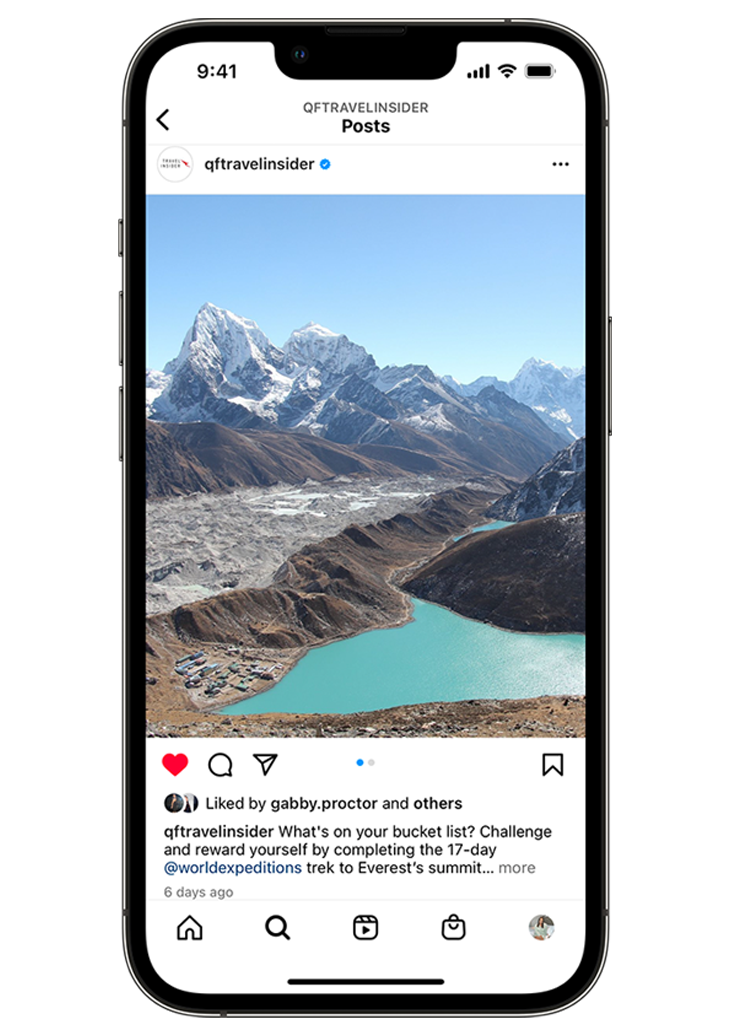How to Prepare for Air Travel and Stretch Your Way to Sleep
When you’re in transit, it can be easy to lose track of routines that normally keep you feeling good at home. But there are plenty of simple movements and exercises you can do in flight that can optimise your health, wellbeing, quality of rest and overall enjoyment no matter where your seat is (aisle, window or middle) or the amount of time you spend in the air.
The key is to just keep moving, says Emma Readman-Thorley, a former sports physiotherapist who is today a flexologist and manager of assisted-stretch facilitator, StretchLab Parramatta. Here are her essential tips to getting the most out of your next trip – whether you’re in for the long haul or a short flight.
Why is movement so important when flying?
1/12When you take off, the cabin air pressure changes and it’s often 70 to 80 per cent less than it is on the ground. To keep the cabin cool and the air fresh, air is recirculated through an environmental control system but the humidity can drop during a long-haul journey, making hydration and movement key to a comfortable travel experience. “[Movement] is very important to keep your circulation flowing properly,” says Readman-Thorley. “It also helps to relieve swelling in your feet and minimise the sense of fatigue that can result from inactivity.”
Why is movement so important when flying? cont.
2/12It helps facilitate other body processes, too. “If you sit down, [the kidneys] slow down as well,” says Readman-Thorley. “Keeping everything moving and flowing is the best thing to do. There’s not always much space but there are things you can do in your seat to keep your body flowing as it normally should be.”
Stretching your muscles can help your kidneys do their job in removing toxins from your body. “Move your limbs for about three to four minutes every hour and regularly travel about the cabin to help make your journey – and your post-flight wellbeing – more pleasant,” she says.
When should I start stretching?
3/12“The more mobile you are, the less you’re going to stiffen up,” says Readman-Thorley. As well as employing a routine of simple stretches before you leave the ground, you can also prepare the body for the flight with relaxation and mobility techniques. “That could even be walking up and down the airport a few times,” she says. These all-important stretches help you relax, “so if you build up tension on the flight, it’s not going to feel as significant”.
How can I make the most of my space in flight?
4/12UK-born Readman-Thorley has had her fair share of long-haul adventures and has her comfort process down to a science – even when she finds herself in a middle or window seat where access to the aisle is limited. Her advice? Just keep those legs in motion.
“It’s as simple as wiggling feet and toes, bringing your toes towards you and pointing them back down,” she says. “That kind of movement is going to keep the blood flowing down to your extremities.” This small exercise minimises cramping and maximises healthy blood pressure.
How can I make the most of my space in flight? cont.
5/12For your above-the-belly-button limbs, Readman-Thorley recommends putting your arms up in the air, interlocking your fingers and slightly bending in each direction. This also keeps your back stretched and limber.
What about breathwork?
6/12Taking long, deep breaths is a part of the bigger picture of health and physical fitness, yet engaging good breathing techniques before you fly is especially helpful for nervous flyers. “Most of the time when your body is tense, it’s because you’re not breathing properly,” says Readman-Thorley. “Take some nice, deep breaths, let yourself relax. The more relaxed you are, the more settled you’re going to be on the flight as well.”
Can temperature affect muscles while flying?
7/12In short, yes. Cooler temperatures can lead to muscle tightness and because most planes keep the cabin temperature around 22°C, it’s crucial to stay rugged up.
Now, the all-important question: does stretching help speed up jet-lag recovery?
8/12Overall relaxation can help ease stress and certainly make sleep on a flight easier to access.
“The more relaxed you are, the better,” says Readman-Thorley. If you’re calm and comfortable while flying and managing to maintain lower blood pressure through regular movement, you’re more likely to fall asleep. This, in turn, will ideally lower the chances of jet lag once you’ve arrived at your destination.
Top three stretches that travellers should do on every flight: For when you’re seated
9/12- Keep your neck warm and mobile. To stretch, move your neck side to side, then look down to bring your chin to chest to stretch out the back of your neck. You can also use the weight of your hands to increase the stretch; place the opposite hand to opposite ear when stretching side to side.
- To stretch your calves, put your leg out straight and pull your toes towards you to open up the calf. “That’s going to keep the blood flowing in your legs,” says Readman-Thorley.
- Keep your lower back and hips limber and consider stretching your sides to improve posture. “That can be as simple as interlocking your hands and putting them behind your head and opening your arms to open your chest. This will help with your posture so your pecs don’t tighten up and cause your shoulders to lean forward.”
Top three stretches that travellers should do on every flight: If you’re able to stand up
10/12- Stand on one leg and bend the other leg at the knee behind you, holding your foot, to stretch your quad.
- Stand up straight and push your hips forward to stretch your hip flexor, which can tighten up while you’re seated for long periods. This will also help straighten your back.
- Bend over to touch your toes. “That’s a good one for your lower back and hamstrings and calves,” says Readman-Thorley. This increases blood flow and comfort levels.
Any tips for once you’ve arrived at your destination?
11/12“Take a good 10 to 15 minutes after you’ve gotten off the plane, even if that’s waiting for your bag, to move and stretch as much as you can to get everything flowing again,” says Readman-Thorley. And don’t forget to refill your water bottle and drink a lot of water: “Hydration is important for your kidneys and flushing everything out, and to hydrate your muscles and skin.”


